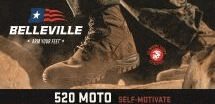King City, California first agency to implement Viridian Gun Cameras also in use by LA Port Police and approved by LA County

MINNEAPOLIS, Minn. – June 23, 2020 – The King City, California Police Department has deployed the FACT Duty™ Weapon-Mounted Camera (WMC™). As transparency in Law Enforcement once again becomes a critical need at this juncture in society today, Chief Robert Masterson and the department have the only technology and tool dedicated to capturing Officer Involved Shootings.
King City is in Monterey County of Central California and sits almost equidistant from several large, major California cities on the banks of the Salinas River. King City is the first department in California to complete implementation of the FACT Duty which is in various stages of testing and implementation in over 40 states across the country.
“The Weapon-Mounted Cameras were purchased and implemented to capture use of force incidents where officers drew their firearms or were involved in an Officer Involved Shooting,” said King City Police Captain Keith Boyd. “As we have all seen, the country, the community and the world expect objective and immediate evidence of Officer Involved Shootings. And this gun camera does just that. They complement our body worn cameras and we see them as a benefit in modern policing.”
Viridian has created an important category for law enforcement with the Weapon-Mounted Camera. This distinctive camera provides an unobstructed view of critical use-of-force events from the end of the firearm, addressing limitations officers can face with body cameras.
“We commend Chief Masterson and the King City Police for being on the leading edge of law enforcement,” Viridian President and CEO, Brian Hedeen, said. “California has one of the largest number of officers in the country, so this is absolutely needed. Our technology can be a supplement or alternative to body cameras as a mandatory evidentiary tool to provide the critical evidence in an officer involved shooting.”
The highly advanced WMC employs a 1080p full-HD digital camera with a microphone and 500 lumen tactical light. Viridian’s proprietary INSTANT-ON® technology automatically activates the camera and microphone whenever the officer draws the firearm from its holster. Not only does this eliminate risk of failure to manually turn on the camera during a critical event, but it also keeps the officer from fumbling with cumbersome equipment.



















































































































